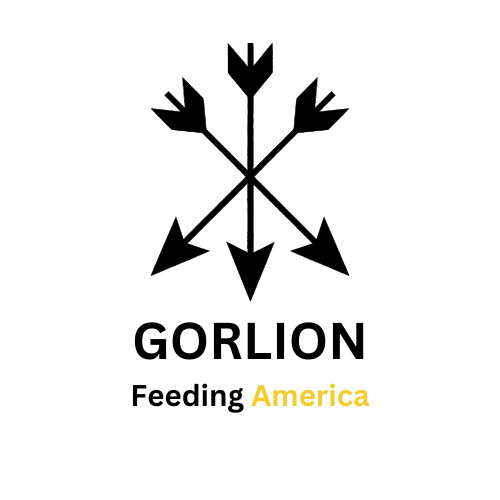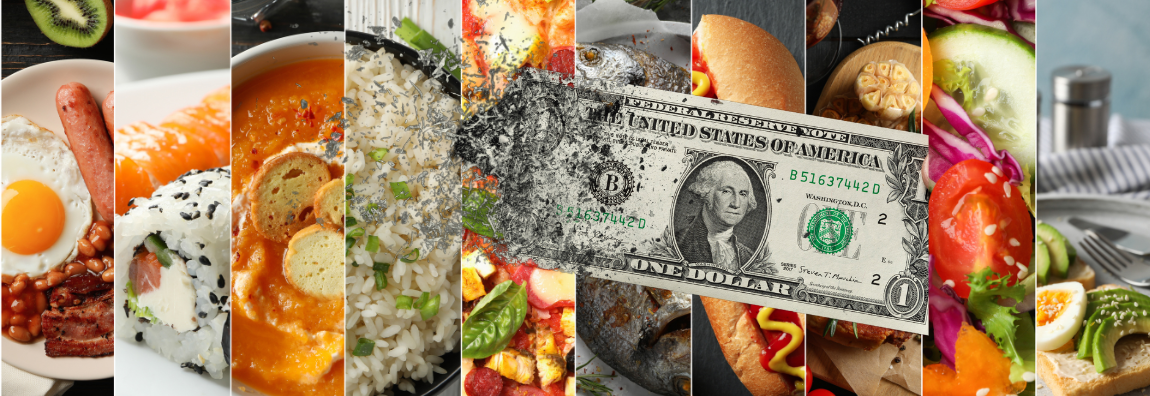The Inflation Tsunami: Navigating the Storm for the US Food and Beverage Industry
Inflation Rising – A Tsunami Approaches
Inflation is knocking at the door, and the US food and beverage industry must heed the warning of the impending storm. The recent headlines of the US selling a staggering $1 trillion in debt this quarter have brought the nation’s budget deficit to the forefront, heightening concerns about the potential impact on inflation. For an industry heavily reliant on agricultural commodities, the implications are profound and demand proactive measures to stay ahead of the curve.
Inflation, like an approaching tsunami, can disrupt the equilibrium of any economy. The debt tsunami unleashed by the US government has added fuel to the fire of inflation concerns, threatening to engulf the food and beverage industry in its wake. The need to sell such a massive amount of debt to finance spending amid an exploding budget deficit has raised eyebrows across the nation.
The Looming Threat to Agricultural Commodities
The US food and beverage industry faces a challenging landscape, marked by rising costs of labor, raw materials, and transportation. However, the interconnected web between inflation, fiscal policies, and agricultural commodities demands far greater vigilance and adaptability. As inflation continues to surge, the implications for the industry’s lifeline – agricultural commodities – are ominous.
Agricultural commodities play a pivotal role in determining the profitability of the food and beverage industry. With inflation on the rise, the cost of these commodities is being driven up, affecting everything from cereal grains to meat and dairy products. The implications are far-reaching:
1. Supply Chain Disruptions: Rising inflation can disrupt supply chains, creating challenges in sourcing raw materials. Weather events, geopolitical tensions, and transportation issues can compound the problem, leading to potential shortages and price volatility.
2. Consumer Behavior: Higher inflation is eroding consumers’ purchasing power, leading to shifts in spending habits and preferences. As household budgets tighten, consumers are gravitating towards more affordable alternatives, impacting demand for certain food and beverage products.
3. Operational Costs: Inflation can drive up operating expenses, including labor, packaging, and energy costs. These cost pressures can squeeze profit margins for food manufacturers, necessitating strategic adjustments to maintain competitiveness.
The Convergence of Fiscal Deterioration and Debt Challenges
While inflation poses a significant threat, the US food and beverage industry faces an even more menacing challenge – fiscal deterioration and debt challenges. The recent downgrade of the US credit rating to AA+ from AAA by Fitch has sent shockwaves through the economy. This downgrade follows Standard & Poor’s similar action, signaling growing apprehensions about the nation’s fiscal management.
The dollar’s fall across various currencies and the decline in stock futures highlights the potential consequences of the downgrade on financial markets. For the food and beverage industry, this could mean further inflationary pressures, complicating the already delicate balance of managing costs while meeting consumer demands.
The Inflation Tsunami and Its Impact
As the inflation tsunami converges with fiscal deterioration and debt challenges, the gravity of the situation becomes even more apparent. The US food and beverage industry finds itself at a critical juncture, facing the daunting task of navigating this complex economic landscape.
The surge in government debt has fueled inflation concerns, and its impact on agricultural commodities could be profound. The Federal Reserve’s efforts to control inflation through interest rate hikes have provided some stabilization, but uncertainty looms large. For the food and beverage industry, the implications of inflation on commodity prices are significant.
Preparing for the Inevitable Storm – Precautionary Steps
In the face of these interwoven challenges, the food and beverage industry must take proactive measures to weather the inflation tsunami:
1. Strengthen Risk Management: Employ risk management tools like futures contracts and options to hedge against price volatility in agricultural commodities. Proactive risk mitigation can provide a safety net during periods of market turbulence.
2. Diversify Sourcing Channels: Establish multiple sourcing channels for agricultural commodities to mitigate the risks of supply chain disruptions caused by inflation. Engaging with different suppliers and exploring partnerships enhances resilience during times of crisis.
3. Focus on Innovation and Efficiency: Adapt product offerings to cater to changing consumer preferences in the face of inflation. Offer value-added products that resonate with cost-conscious consumers to ensure steady demand.
4. Enhance Operational Efficiency: Streamline operations and optimize processes to improve cost efficiency. Identifying areas for improvement can help offset rising expenses and protect profit margins.
Embracing the Gorlion Advantage
In these turbulent times, Gorlion stands ready to empower the food and beverage industry with tailor-made solutions. Their market maker business model, enhanced by artificial intelligence, equips businesses with the insights and expertise needed to navigate inflationary challenges and fiscal uncertainties. Gorlion’s strategic guidance will help businesses stay ahead of the curve, ensuring they emerge stronger and more resilient.
Forging a Resilient Path Forward
The convergence of inflation concerns and fiscal challenges has created an inflation tsunami with far-reaching implications for the US food and beverage industry. The Federal Reserve’s efforts to control inflation and the Fitch downgrade have heightened uncertainties in the market. However, these challenges also present opportunities for growth and adaptation.
In this time of crisis, complacency can no longer be the status quo. The gravity of the situation demands urgent action from the food and beverage industry. By embracing innovation, risk management, and adaptability, the industry can forge a resilient path forward.
Navigating the Inflation Tsunami with Resolve
As we stand on the precipice of the inflation tsunami, the urgency of the situation cannot be overstated. The US food and beverage industry must act decisively to weather the storm and safeguard its future. The convergence of inflation concerns, fiscal deterioration, and debt challenges demands proactive strategies, guided by the expertise of Gorlion, to navigate this complex economic landscape.
With courage and determination, the industry can emerge stronger on the other side. The journey ahead is fraught with challenges, but by understanding the gravity of the situation and taking bold steps, the US food and beverage industry can rise above the tides of inflation and forge a resilient future. Let us seize this moment and act with urgency to secure a prosperous tomorrow. The time for action is now.

